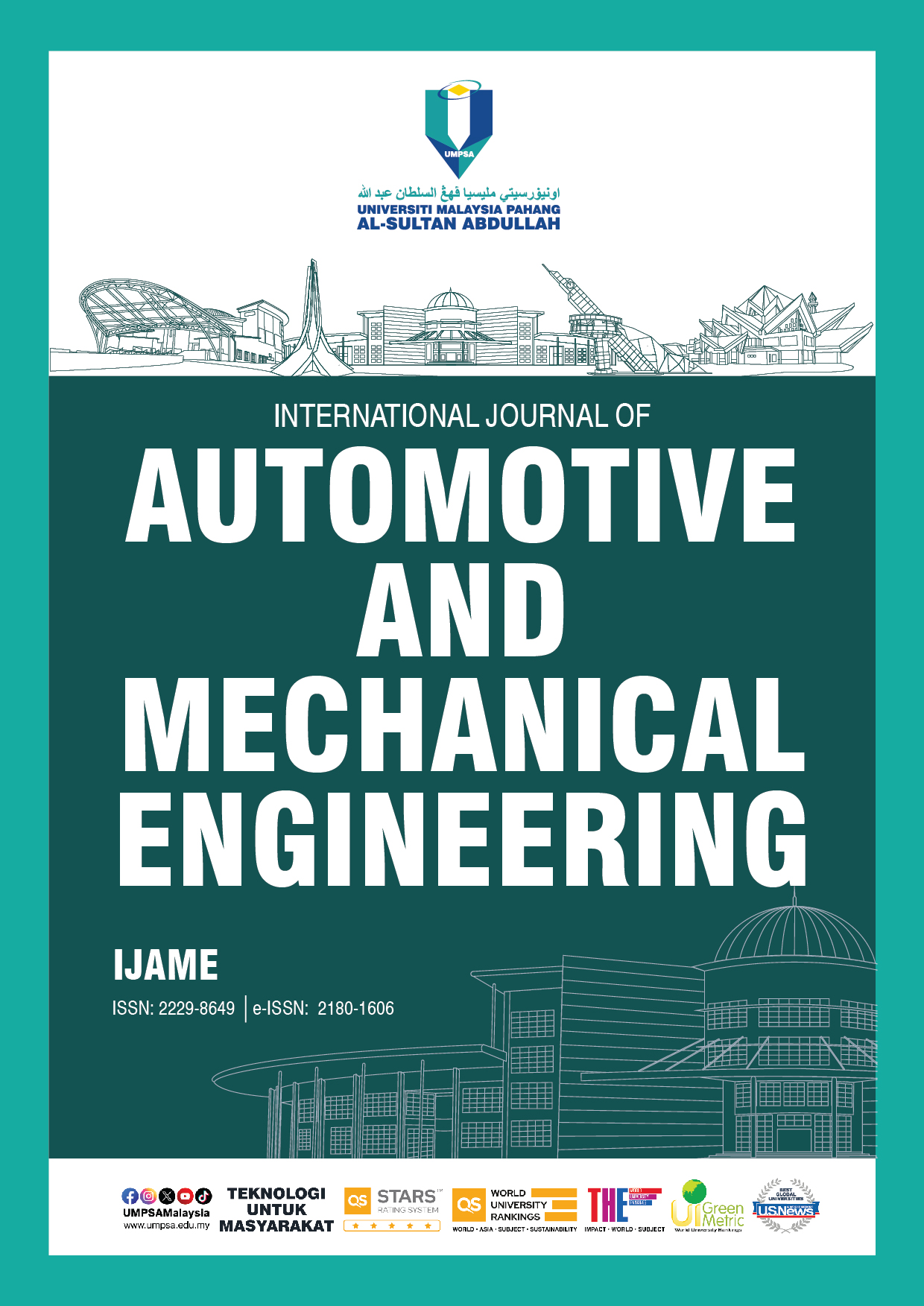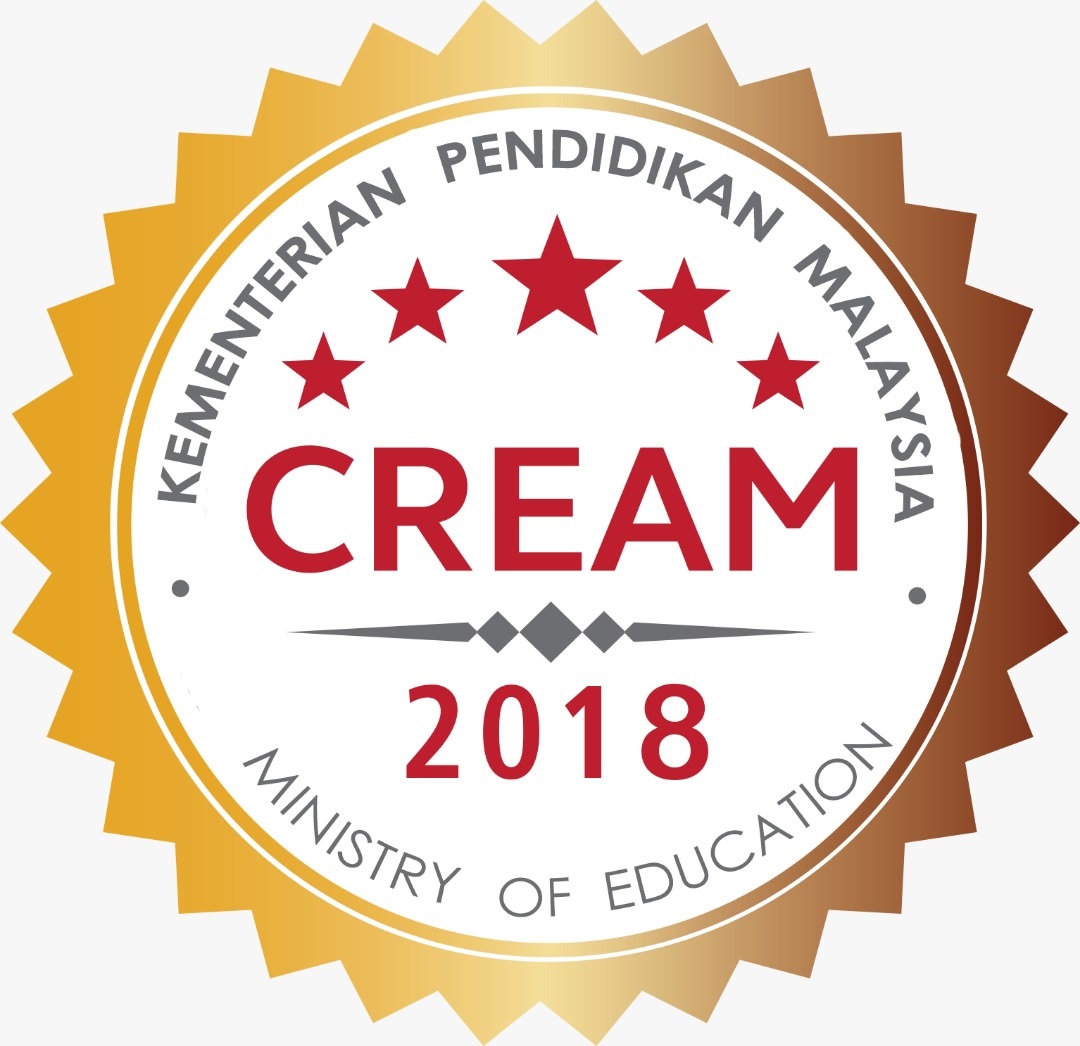Parametric Analysis of Ferrofluid Line Contact Elastohydrodynamic Lubrication
DOI:
https://doi.org/10.15282/ijame.22.2.2025.5.0942Keywords:
Friction, Ferrofluid, Elastohydrodynamic, Lubrication, Magnetic fieldAbstract
Ferrofluids are stable colloidal suspensions consisting of magnetic nanoparticles. A ferrofluid can be kept in a particular location by applying a suitable magnetic field. This feature is crucial in improving lubrication, especially in situations where there is a possibility of starvation. In this paper, a model for ferrofluid elastohydrodynamic lubrication is presented. Very detailed parameters of ferrofluid, such as magnetic saturation, ferrofluid radius, surfactant thickness, and ferrofluid concentration, are considered in this model. Then, various factors that affect the lubricant flow, such as load, entraining velocity, ferrofluid type, ferrofluid specification, and concentration on lubricant film thickness variation and friction coefficient, are investigated. The governing equations of ferrofluid flow, such as continuity, modified Reynolds equation, ferrofluid properties relationships, magnetic intensity, film thickness, and load equation, are derived and simultaneously solved in Matlab to find the pressure variation and local film thickness. The results show that by increasing the load, the particle size, and the volume concentration, the lubricant film thickness decreases, and the friction coefficient rises. Also, by increasing the speed, magnetic saturation, and magnetic field intensity, the thickness of the lubricant layer will increase, and the friction coefficient will decrease. At low loads, using ferrofluid will improve the friction coefficient by about 15% and at high loads by about 40%. The effect of ferrofluid at different speeds is about a 30% reduction in the friction coefficient. The optimum ferrofluid concentration was also estimated to be 2% by volume. Finally, the optimal state of using ferrofluid based on type, mixing percentage and coating thickness have been obtained.
References
[1] L. L. de Castro, C. C. Amorim, J. P. Miranda, T. D. Cassiano, and F. L. de Oliveira Paula, “The role of small separation interactions in ferrofluid structure,” Colloids and Surfaces A: Physicochemical and Engineering Aspects, vol. 635, p. 128082, 2022.
[2] M. Kole and S. Khandekar, “Engineering applications of ferrofluids: A review,” Journal of Magnetism and Magnetic Materials, vol. 537, p. 168222, 2021.
[3] M. D. Contreras-Mateus, A. Chaves-Guerrero, F.H. Sánchez, and N. N. Nassar, “Ferrofluids and magnetism in the oil industry: Theories, challenges, and current applications—A comprehensive review,” Physics of Fluids, vol. 36, no.12, p. 121302, 2024.
[4] X. Liu, W. Xu, H. Hu, Y. Wu, P. Yan, and B. Xu, “Parameter design and dynamic stability of controllable damping ferrofluid bearing,” Lubrication Science, vol. 36, no.5, pp. 396-406, 2024.
[5] J. Wen, Z. Anjum, Q. Dai, W. Huang, and X. Wang, “Controlling starvation of thrust ball bearing using magnetic fluids,” ASME Journal of Tribology, vol. 147, no. 11, p. 114302, 2025.
[6] K. Atlassi, M. Nabhani, and M. E. Khlifi, “Rotational viscosity effect on the stability of finite journal bearings lubricated by ferrofluids,” Journal of the Brazilian Society of Mechanical Sciences and Engineering, vol. 43, no. 12, p. 548, 2021.
[7] H. Rui, C. Hansheng, Z. Haoran, W. Humao, G. Junpeng, Y. Songshan, et al., “Research on magnetic fluid precise localized lubrication thrust cylindrical roller bearing with low-friction micro-vibration and high load-bearing capacity,” Journal of Physics: Conference Series, vol. 2853, no. 1, p. 012016, 2024.
[8] R. C. Shah and M. V. Bhat, “Lubrication of porous parallel plate slider bearing with slip velocity, material parameter and magnetic fluid,” Industrial Lubrication and Tribology, vol. 57, no. 3, pp.103–106, 2005.
[9] P. C. P. Chao and J. S. Huang, “Calculating rotor dynamic coefficients of a ferrofluid-lubricated and herringbone-grooved journal bearing via finite difference analysis,” Tribology Letters, vol. 19, pp. 99–109, 2005.
[10] J. P. Singh, and N. Ahmad, “Analysis of a porous-inclined slider bearing lubricated with magnetic fluid considering thermal effects with slip velocity,” Journal of the Brazilian Society of Mechanical Sciences and Engineering, vol. 33, pp. 351-356, 2011.
[11] N. D. Patel and G.M. Deheri, “Effect of surface roughness on the performance of a magnetic fluid based parallel plate porous slider bearing with slip velocity,” Journal of the Serbian Society for Computational Mechanics, vol. 5, no. 1, pp. 104-118, 2011.
[12] M. E. Shimpi and G. M. Deheri, “Effect of deformation in magnetic fluid based transversely rough short bearing,” Tribology-Materials, Surfaces & Interfaces, vol. 6, no. 1, pp. 20-24, 2012.
[13] W. Huang, C. Shen, X. L. Wang and S. Liao, “Study on the ferrofluid lubrication with an external magnetic field,” Tribology Letters, vol. 41, pp. 145–151, 2011.
[14] J. R. Patel, G. M. Deheri, and S. J. Patel, “Ferrofluid lubrication of a rough porous hyperbolic slider bearing with slip velocity,” Tribology in Industry, vol. 36, no. 3, pp. 145–151, 2014.
[15] S. Laghrabli, M. El Khlifi, M. Nabhani, and B. Bou-saïd, “Static characteristics of ferrofluid finite journal bearing considering rotational viscosity effect,” Lubrication Science, vol. 29, no. 4, pp. 203–226, 2017.
[16] X. I. Huang, X. Zhang, Y. O. Wang, “Numerical simulation of ferrofluid-lubricated rough elliptical contact with start-up motion,” Applied Mathematical Modelling, vol. 91, pp. 232-260, 2020.
[17] J.-J. Zhao, Y.-q. Wang, P. Zhang, and G.‐x. Jian, “A Newtonian thermal elastohydrodynamic lubrication model for ferrofluid‐lubricated involute spur gear pair,” Lubrication Science, vol. 32, no. 2, pp. 33-45, 2020.
[18] R. C. Shah and R. B. Shah, “Static and dynamic performances of ferrofluid lubricated long journal bearing,” Zeitschrift für Naturforschung, vol. 76, no. 6, pp. 493-506, 2021.
[19] X. I. Huang, W. Wang, L. I. Ding, and B. Yang, “Investigating the lubrication mechanism and stiffness of oil-based ferrofluids in spur gear drives,” Physics of Fluids, vol. 33, p. 043103, 2021.
[20] R. C. Shah and R. B. Shah, “Generalized ferrofluid based lubrication equation and its application to porous journal bearing,” ZAMM‐Journal of Applied Mathematics and Mechanics, vol. 102, p. e202000365, 2022.
[21] K. Atlassi, M. Nabhani, and M. El Khlifi, “Ferrofluid squeeze film lubrication: surface roughness effect,” Industrial Lubrication and Tribology, vol. 75, no. 1, pp. 133-142, 2023.
[22] S. A. Vaziri, M. Norouzi, P. Akbarzadeh, M. Kim, and K. C. Kim, “Numerical analysis of conical hydrodynamic bearing lubricated with magnetorheological fluid,” Journal of the Brazilian Society of Mechanical Sciences and Engineering, vol. 46, no. 2, p. 67, 2024.
[23] Z. Liu, Z. Yan, S. Wu, H. Sun, and S. Zhang, “Experimental and numerical study of the mixed lubrication under the action of magnetic ionic liquid additives,” Scientific Reports, vol. 14, no. 1, p. 5620, 2024.
[24] A. Azzala, B. Chetti, and I. Zidane, “Numerical analysis of the effect of elastic deformation on the static characteristics of a circular journal bearing lubricated with a ferrofluid,” Proceedings of the Institution of Mechanical Engineers, Part J: Journal of Engineering Tribology, vol. 239, no. 1, pp. 26-36, 2025.
[25] D. Dowson and G. R. Higginson, Elastohydrodynamic Lubrication, the Fundamentals of Roller and Gear Lubrication, Oxford, Pergamon, 1966.
[26] M. D. Cowley, “Ferrohydrodynamics,” By R. E. Rosensweig, Cambridge University Press, p. 344, 1985. Journal of Fluid Mechanics, vol. 200, pp. 597-599, 1989.
[27] A. Fang, “Consistent hydrodynamics of ferrofluids,” Physics of Fluids, vol. 34, no. 1, p. 013319, 2022.
[28] W. Yang, Non-Equilibrium Ferrohydrodynamics, CRC Press, 2025.
[29] Z. Ren, Y. Han, R. Hong, J. Ding, and H. Li, “On the viscosity of magnetic fluid with low and moderate solid fraction,” Particuology, vol. 6, no. 3, pp. 191–198, 2008.
[30] P. Martín-Luna, B. Gimeno, D. González-Iglesias, D. Esperante, C. Blanch, N. Fuster-Martinez, et al., “On the magnetic field of a finite solenoid,” IEEE Transactions on Magnetics, vol. 59, no. 4, pp. 1-6, 2023.
[31] Q. G. Lin, “An approach to the magnetic field of a finite solenoid with a circular cross-section,” European Journal of Physics, vol. 42, no. 3, p. 035206, 2021.
[32] R. Manglik, Engineering Tribology, EduGorilla Publication, 2024.
[33] H. Ghaednia, H. Babaei, R. L. Jackson, M. J. Bozack, and J. M. Khodadadi, “The effect of nanoparticles on thin film elasto-hydrodynamic lubrication,” Applied Physics Letters, vol. 103, no. 26, p. 263111, 2013.
[34] A. P. Singh, R. K. Dwivedi, and A. Suhane, “In the context of nano lubrication, do nanoparticles exhibit favourable impacts on all tribo surfaces? A review,” Protection of Metals and Physical Chemistry of Surfaces, vol. 58, no. 2, pp. 325-338, 2022.
[35] G. Wang, W. Wang, Y. Zhang, J. Shen, J. Xu, and K. Liu, “A solution for mixed elastohydrodynamic lubrication modeling considering effects of solid particles and surface roughness,” Proceedings of the Institution of Mechanical Engineers, Part J: Journal of Engineering Tribology, vol. 236, no. 11, pp. 2272-2282, 2022.
Downloads
Published
Issue
Section
License
Copyright (c) 2025 The Author(s)

This work is licensed under a Creative Commons Attribution-NonCommercial 4.0 International License.







